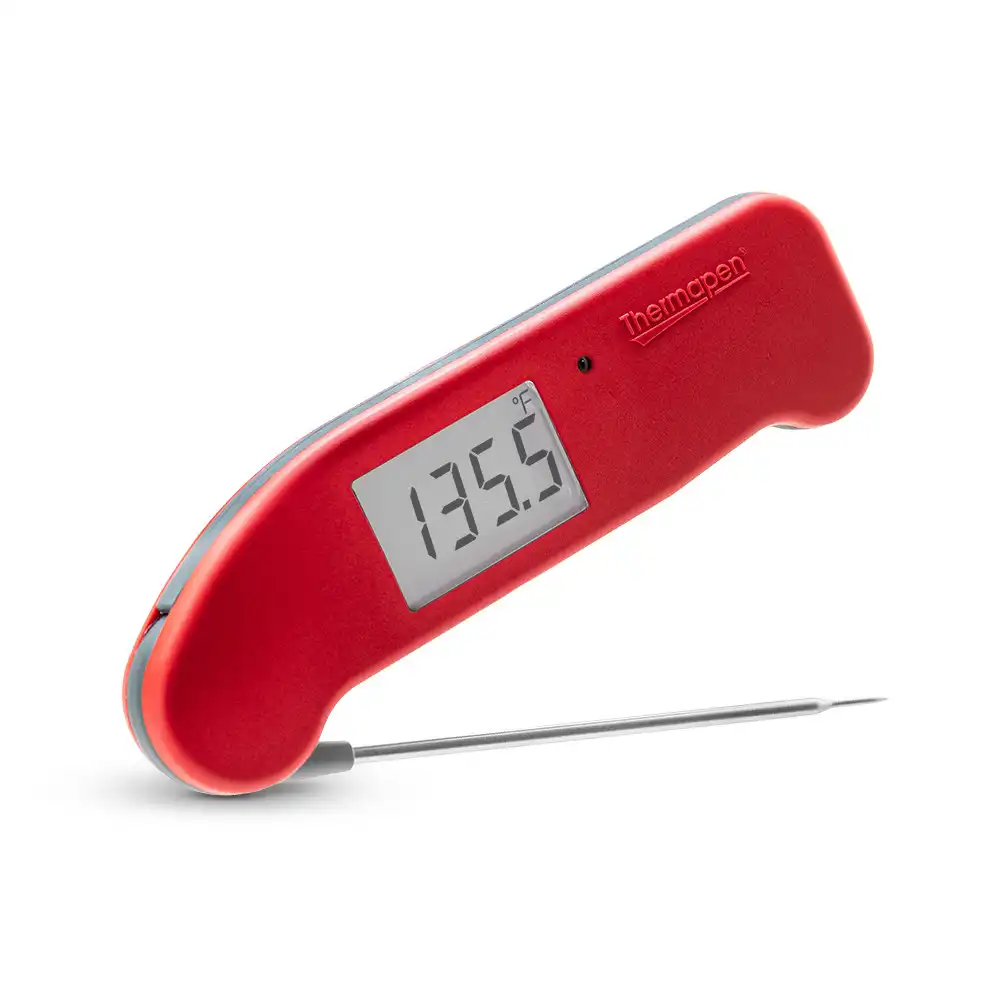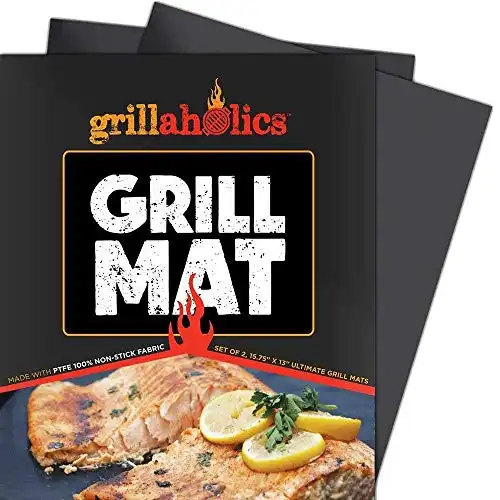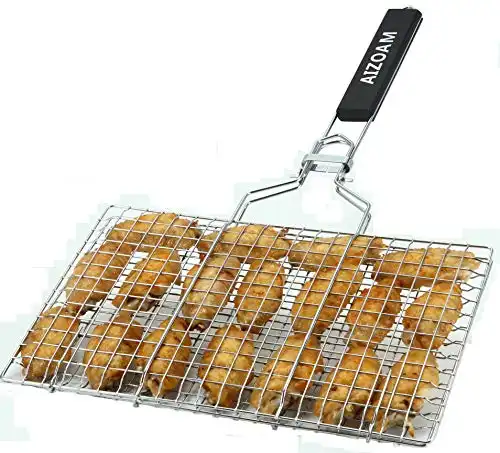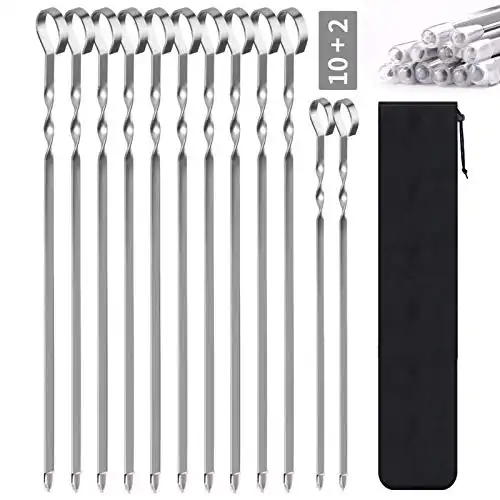How Long to Grill Chicken for Juicy Results

If you grill chicken for too long, it becomes dry and tough. This is especially true with popular, low-fat cuts such as breast meat.
In this guide, we’ll explain the appropriate grilling times for chicken based on a number of important factors, such as the part of the bird you’re cooking and the grilling method used.
Why you should use temperature instead of time to tell when chicken is cooked
While this is true of all meats, eating undercooked chicken is a health hazard that can make you seriously sick. If the internal temperature of your chicken is not sufficiently high, your tasty-looking meat could be full of bacteria, including especially harmful strains such as salmonella.
The only way to be 100% sure that your chicken is thoroughly cooked is by checking its internal temperature. Different thicknesses, cuts and fat content levels are just some of the factors that can affect the cooking time required.
Rather than overcooking your chicken to be sure any bacteria have been killed, the easiest and most accurate way to check your chicken is cooked properly is to use a digital meat thermometer.
Your best option is the Thermapen ONE from ThermoWorks. It’s on the expensive side but it has a super fast read time, and is durable enough to withstand drops and splashes.
- Crazy fast one second read times
- Large, bright, backlit screen
- Five-year warranty
- It's an expensive piece of kit
If you’re on a budget we really like this new, updated digital meat TP18 thermometer by ThermoPro.
It also features a backlit LED display, a hanging hole and a magnetic back, making it ideal for both outdoor and indoor use.
What is the right temperature for cooked chicken?
The FDA recommends an internal temperature of 165℉ for all poultry. However, when taking a temperature reading, the location of your thermometer probe is crucial.
- As recommended by the FDA’s article on Kitchen Thermometers, if cooking a whole bird you should take the temperature at the thickest part of the thigh, without touching the bone.
- If you’re cooking individual parts of chicken, be sure to test the thickest section. If your chicken parts are unevenly thick or irregularly shaped, it’s recommended to test in several different places to make sure that it is evenly cooked throughout.
You may have heard that if you cut your cooked chicken and the juices run clear, it is thoroughly cooked. Unfortunately, this method doesn’t always hold true.
Older chicken, in particular, tends to “run clear” more easily. In these instances, the juices can run clear even when the meat is undercooked.
Why risk your health and that of your friends and family when a meat thermometer will let you know for certain in just a few seconds?
Once cooked, the USDA recommends against keeping chicken in the temperature “danger zone” between 40 to 140℉ where pathogenic bacteria can rapidly multiply.
Cooked chicken can be safely kept below 40℉ for three to four days, but should be disposed of after this time has passed.
Average grilling times for chicken
Now that you know the correct temperature for cooked chicken, you’re likely wondering how long it will take you to grill your favorite chicken cuts.
Before you get started, bear in mind that boneless cuts of chicken will always cooker faster than their bone-in counterparts; so be sure to adjust your grilling times accordingly, as per our advice below.
While we’re on the topic, if you struggle with burnt chicken skin or frequent flare-ups when grilling, then you may like to try out a grill mat. They also make cleaning up your grill afterward nice and easy. We particularly like this reusable grill mat by Grillaholics.
How long to grill boneless chicken breast
Quick and easy to prepare, this popular, low-fat chicken cut is also the most easily overcooked. Therefore, you’ll need to keep a close eye on the cooking time to achieve succulent, tender results and avoid a dried out, chewy mess.
An average boneless chicken breast will weigh around six to eight ounces and should cook for a total of 10-15 minutes, with at least five minutes per side.
If you are grilling smaller, thinner chicken breasts or want to grill chicken tenders, these should take around 10 minutes or less.
To prevent your boneless chicken breasts drying out, we recommend keeping your thermometer to hand and testing the internal temperature around the 10-minute mark for standard-sized breasts, or after three to four minutes on both sides for tenders.
Remember, you can always stick them back on the grill for another few minutes if needed, but once they’re dried out there’s nothing you can do.
You can also get fantastic results from smoking chicken breast or cutting into pieces for grilled chicken kabobs so definitely give those ideas a go as well.
How long to grill bone-in Chicken Breast
As stated earlier, bone-in chicken breasts take longer to cook through than boneless ones. While bone-in chicken breasts are less common, they do have two distinct advantages over boneless breasts.
Firstly, they tend to be cheaper, which is always a bonus. Secondly, the bone and skin help to prevent your chicken breast from drying out. This makes bone-in chicken breasts a lot easier to get just right.
For bone-in chicken breasts, we recommend doubling the grill time to around 10 minutes per side. You’ll want to be careful not to blacken the skin with the longer grilling duration, so you might want to consider that grill mat we suggested earlier, or grill over indirect heat for part of the cooking process.
In any case, be sure to check with your thermometer that your bone-in chicken breast has reached an internal temperature of 165℉, taking care not to touch the bone.
Bone-in leg or thigh grilling time

Chicken legs and thighs are generally enjoyed with the bone in, which makes them easier to handle when grilling. The bones, skin and extra fat on bone-in chicken legs and thighs will all contribute to the overall grill time but make for a forgiving cut that’s difficult to overcook.
We recommend using a combination of indirect and direct heat to ensure a thorough cook and a crispy, but not burnt, skin. Allow 40 minutes grilling time with regular turning and use indirect heat for the last 10 minutes for controlled skin crisping.
Boneless thigh grilling time
Boneless chicken thighs are less commonly found in stores than your average bone-in thigh.
When you do find them, they’re likely to also be skinless. If you’d prefer to keep the skin on, you can always debone regular chicken thighs or ask your butcher to do this for you.
Boneless chicken thighs generally take 10-12 minutes to grill over direct heat, making them a fairly rapid choice – ideal for quick weekend appetizers if you’re in a hurry to start serving up.
As chicken thighs contain mostly dark meat, they tend to be more forgiving to the novice griller than breast meat. However, if you can, opt for thighs with the skin on where possible for extra protection against drying out.
Wings grilling time
Wings are a popular chicken grilling cut.
Even though they are small they still take a while to cook through as they are on the bone. You may not have thought so, but wings actually take around 20-25 minutes to grill over direct heat.
Extra care is needed as they can burn pretty easily, so be sure to flip yours at least every three minutes. We prefer to use a grill basket, like this wooden-handled version, to flip ours all in one go, rather than spending the entire duration turning them all individually.
Whole chicken
Grilling a whole chicken will take quite some time. Exactly how long depends upon the size of your bird.
As a general rule of thumb, expect to grill for 25 minutes per pound. In practice, this can vary considerably depending upon the age of the bird and its fat percentage, as well as your grill temperature.
An average four to five pound chicken will probably take around an hour and a half to two hours over an indirect medium heat.

However, be sure to check your bird is thoroughly cooked through (internal temperature of 165℉) at multiple parts, in particular at the thickest part of the thighs.
What other factors influence chicken cooking time?
Of course, the above figures are only guidelines. While they are useful, there are also several other factors to take into account when grilling chicken.
Weight and thickness will significantly alter your cooking times. We’ve taken into account the average figures for our grill time recommendations.
However, if your chicken breast is particularly thick or your thighs are pretty small, then you should expect to add on or knock off a few minutes. Hence the importance of using a meat thermometer to be sure that your chicken is done.
If your chicken is frozen, it’s better to thoroughly defrost it before cooking. However, according to the USDA, it is possible to grill poultry from frozen, so long as it’s a uniformly thin cut.
You should also allow for a 50% longer cooking time.
Best way to grill a whole chicken
Perfectly grilling a whole chicken can be tricky. The bony thigh joints that take the longest to cook are situated underneath the back. Therefore, by the time these are cooked through, the breast meat is often overdone, chewy, and bordering on inedible.
For this reason, we recommend spatchcocking your chicken for a faster and more even cook. By cutting down the backbone and flattening the bird, you expose the legs and thighs more, so they will be ready at around the same time as the breasts.

A spatchcocked three to four-pound chicken will take around 45-60 minutes to grill.
We recommend grilling it for 40-50 minutes over medium, indirect heat until it reaches approximately 145℉ internally. Then, grill over direct heat for the remainder, until the internal temperature reaches 160℉ in both the breast and thigh.
To make turning your spatchcocked bird a little easier to manage, insert one skewer through its breasts and another through the thighs.
These heavy-duty, reusable metal skewers are handy to have and are also good for grilled chicken kebabs. Their flat shape stops them from simply spinning round inside the bird when turning your chicken over.
Does marinating affect cooking time?
Wet marinades may increase cooking times slightly for skin-on cuts of chicken. This is because the skin needs to dry out before it can crisp.
Dry rubs don’t really penetrate into the meat much and they are the first thing that cooks when your chicken hits the grill, creating a caramelized crust.
While a dry rub won’t make your chicken cook any faster or slower, if you find that it is blackening too quickly, you may want to cook your chicken over indirect heat and transfer it to direct heat for a short burst before serving.
Of course, cooking over indirect heat as opposed to direct heat will take longer, so be sure to check the internal temperature with a digital thermometer. When it reaches around 145-150℉, move the chicken over to direct heat to crisp up for a few minutes until it reaches the threshold of 165℉.
Wrapping it up
Too many chicken dishes are ruined by overcooking, usually the result of a lack of knowledge and the fear of food poisoning.
Grilling should be fun, and properly grilled chicken is succulent, tender and flavorsome. Sure, there’s a lot to keep in mind when cooking chicken, but if you follow our in-depth guide and use a digital meat thermometer, you’re sure to enjoy delicious, perfectly-cooked results every time.
What do you think? Has this article helped you? Be sure to let us know in the comments below and don’t forget to share with all your grilling buddies!











